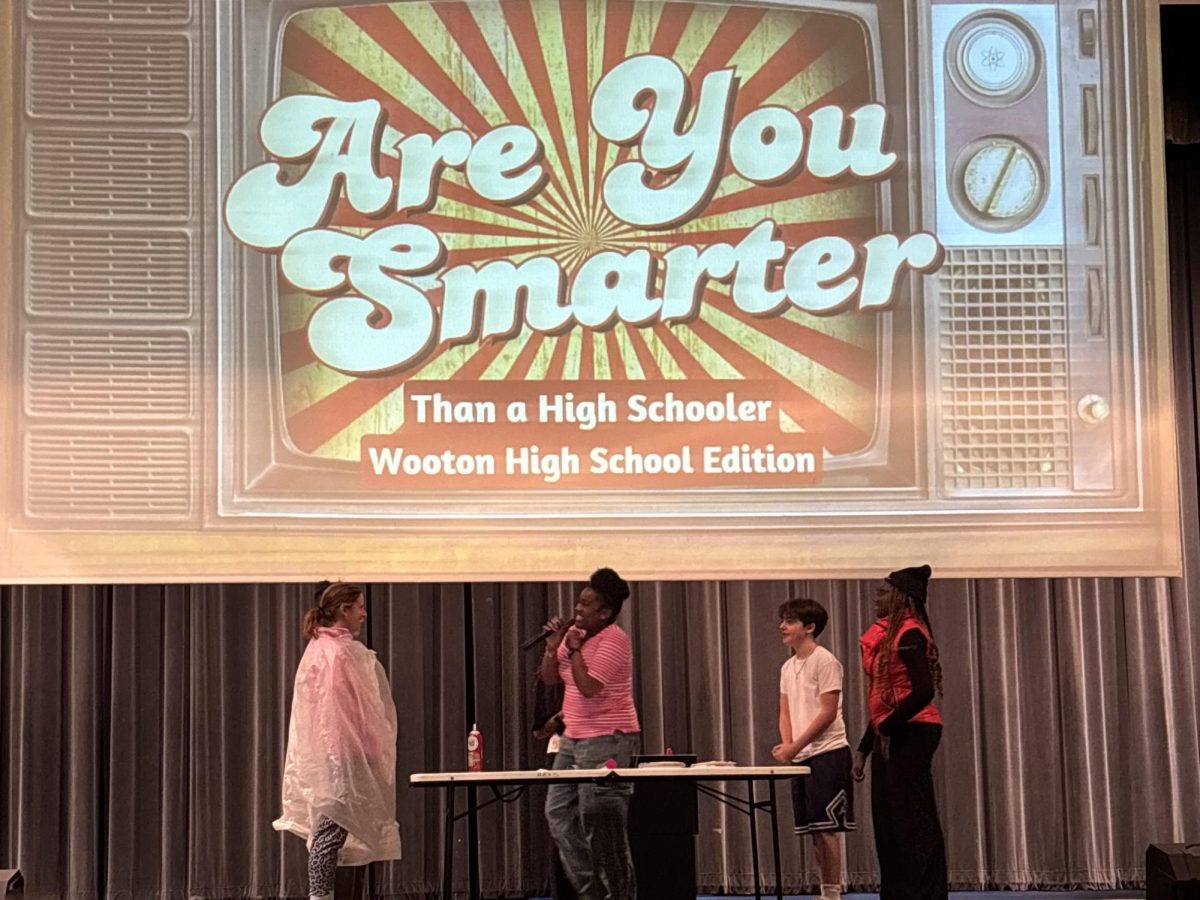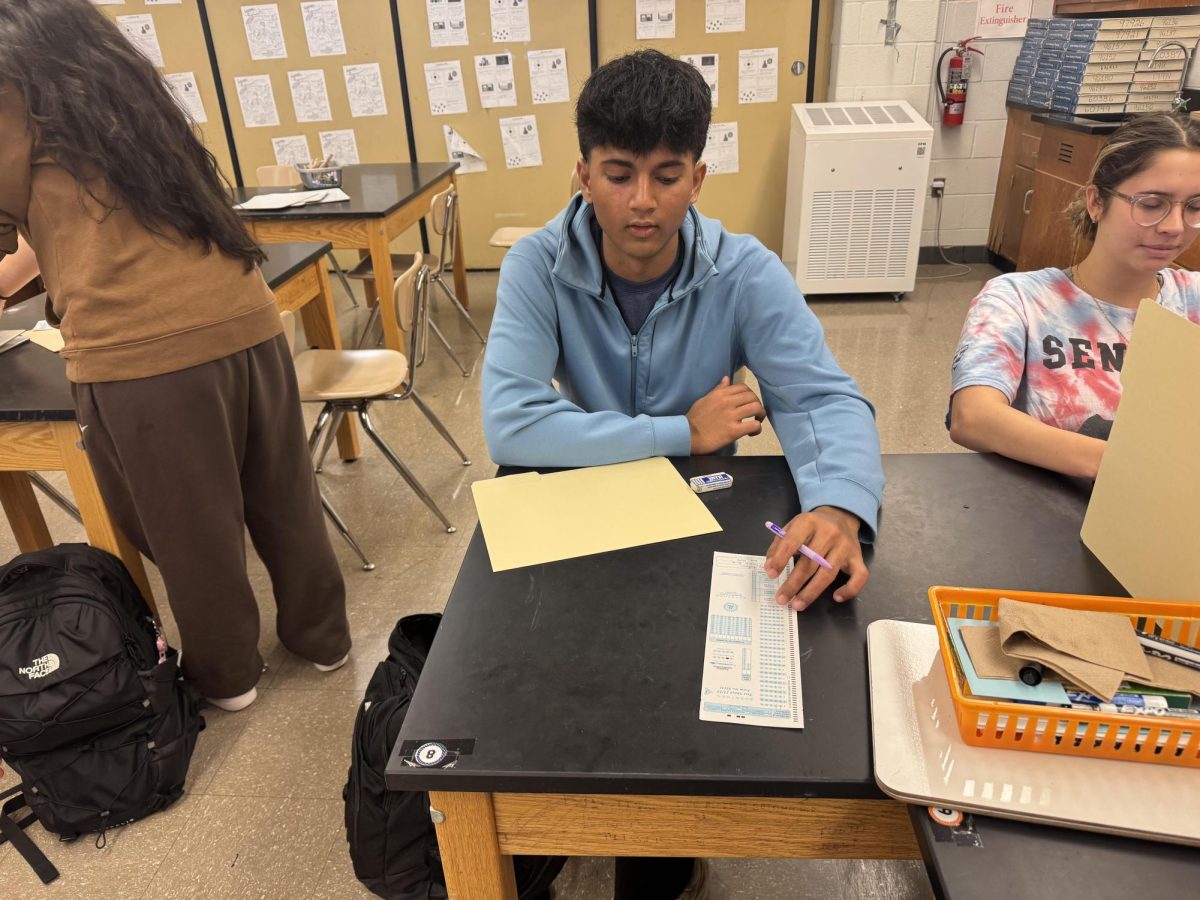On Nov. 6, former President Donald Trump won the presidential election, securing his spot in the White House for a second (nonconsecutive) term.
Trump won both the popular vote and Electoral College, beating opponent Vice President Kamala Harris by a margin of 312-226 electoral votes. The Senate was also flipped by Republicans, and the House has remained Republican. The Republican Party will enter Trump’s next term with a unified government, meaning the road toward passing policy and achieving campaign goals will be substantially easier.
As students in a public school, the actions of the federal government and president can have a direct impact on the education we receive. While the Department of Education (DOE) has a substantial impact on schools, there is a distinction between their jobs and the state and local education systems. The Maryland DOE is responsible for aspects like opening and closing schools, writing curriculum, and setting graduation requirements. There’s a multitude of other jobs the state and local governments do to run education in each state, but states rarely have enough funding to cover everything by themselves.
The federal DOE is responsible for lots of the funding that is appropriated to states for different uses. Each state receives funding to support Title I schools, and to support students with disabilities under I.D.E.A (Individuals with Disabilities Education Act). The federal DOE is also responsible for funding postsecondary education financial aid, like Pell grants, FAFSA or other student loans. The data that the DOE collects is also used to determine trends in American education and is given to Congress to determine future legislation. With the election of Trump, the way the federal government supports education will certainly change, according to his platforms and public statements.
Abolishing the Department of Education
Trump has claimed he wants to abolish the DOE and shift the majority of their responsibilities onto other departments in order to return the control of education back to the states. In Trump’s platform, he said Americans “are at the bottom of every educational list in terms of results.” This is used as a reasoning for returning education back to the states.
However, America is ranked 12th out of 37 highly developed countries in scientific proficiency, and 28th in math proficiency. While America’s scores have fallen since 2018 when the test was last administered, 25 of the other countries also experienced a decline. While Trump has not been specific in how the responsibilities of the DOE will be split up if it is successfully abolished, programs like FAFSA, Pell grants, Title 1 funding, and the OSEP (Office of Special Education Programs) are at risk to be affected.
While Trump has shared this goal, obstacles lie in his way to completely abolish the DOE. To eliminate a federal Department, a 60-person supermajority is needed in the Senate, which would require seven Democrats to vote with the Republicans, assuming all Republicans are in favor. In 2023, the House attempted to propose a measure abolishing the DOE, but it faced disapproval even from Republicans, with Rep. Elise Stefanik of New York opposing the action. The idea of abolishing the DOE is not new, however, with past Republicans like Ronald Reagan and Bob Dole both supporting the cause in their times.
FAFSA & Pell Grants
The future of financial aid programs during Trump’s term remains uncertain. When he served his first term, he consistently called for cut funding to federal financial aid programs. In Trump’s 16-page platform, he only mentions his plans for higher education funding once. The platform writes that “Republicans will support the creation of additional, drastically more affordable alternatives to a traditional College degree.” The process or specificities for this plan are not laid out, so Trump’s plan for aid seems to be unclear.
However, in the Heritage Foundation’s Project 2025, more ideas are laid out for aid. While Trump has denied any ties to Project 2025, many of its writers served in his administration and on his campaign, and Trump has picked one of the authors to be the ‘border czar’ for his term. Project 2025 aims to end a pattern of illegal immigrants receiving financial aid and Pell grants. However, illegal immigrants are not eligible for Pell grants, so it is unclear what they plan to change.
In regards to federal loans, Project 2025 emphasizes the elimination of any loan forgiveness that the Biden administration has introduced, and every single loan will be expected to be paid back in full. Project 2025 also lays out a plan for how federal loans will be restructured assuming the DOE is abolished. This plan includes creating a new government corporation that would contain employees appointed by the president to oversee all loan repayment and portfolios.
Head Start and Title I
The Head Start program was originally created during President Lyndon B. Johnson’s campaign as part of the War on Poverty. Head Start was expanded in 1981 during the Reagan presidency and has continued to grow. The program was created to provide early childhood education and offer health, nutrition, and health services to impoverished families.
While enrollment in the program is declining, the outcomes of the program have been proven to be positive. Studies have found that students in Head Start have improved test scores and career outcomes as opposed to peers not in the program, and parents with kids in the program increase their income, and feel that they have become better parents.
While Trump doesn’t lay out any plans in his platform for expanding or changing Head Start, Project 2025 explicitly writes that it should be eliminated. They support this by stating the program lacks positive outcomes and is a waste of budget. Title I is another federal program that provides extra funding and resources to schools with high poverty measures.
In Maryland, any school with a poverty measure of 75% or higher is automatically designated to be Title I eligible. Title I funding is used to ensure all students receive equal educational opportunities. Title I provides extra resources for reading and math education, and supports summer and after-school programs to ensure students’ learning is reinforced.
Under Trump’s presidency, it is suggested by Project 2025 that funding responsibilities for Title I programs should be transferred back to the states over a decade. For states with already-tight education budgets, this could mean the quality of Title I programs fall or are cut entirely.









Sharon • Nov 20, 2024 at 8:11 AM
Very well written and clearly stated. Please continue to keep us updated and informed.